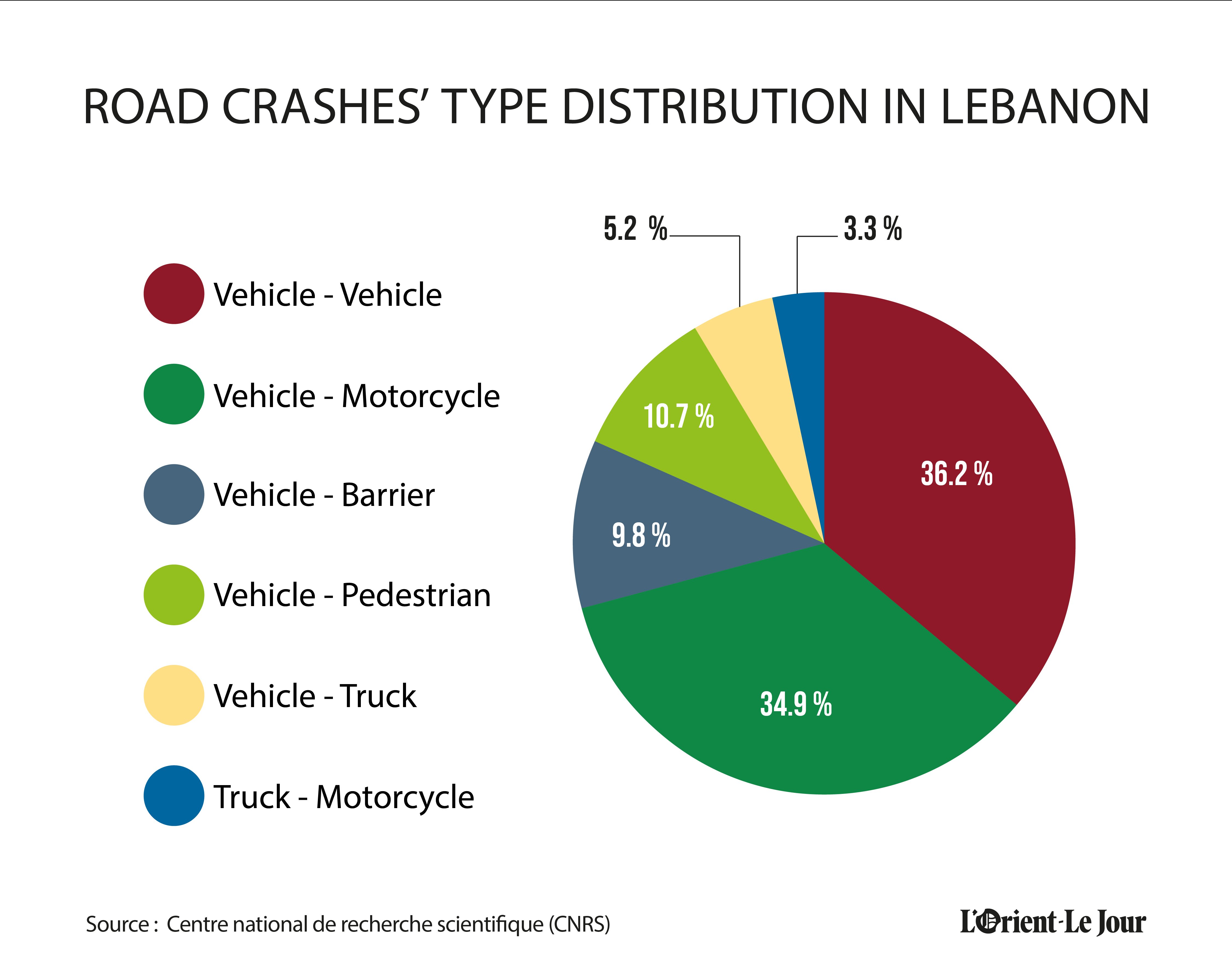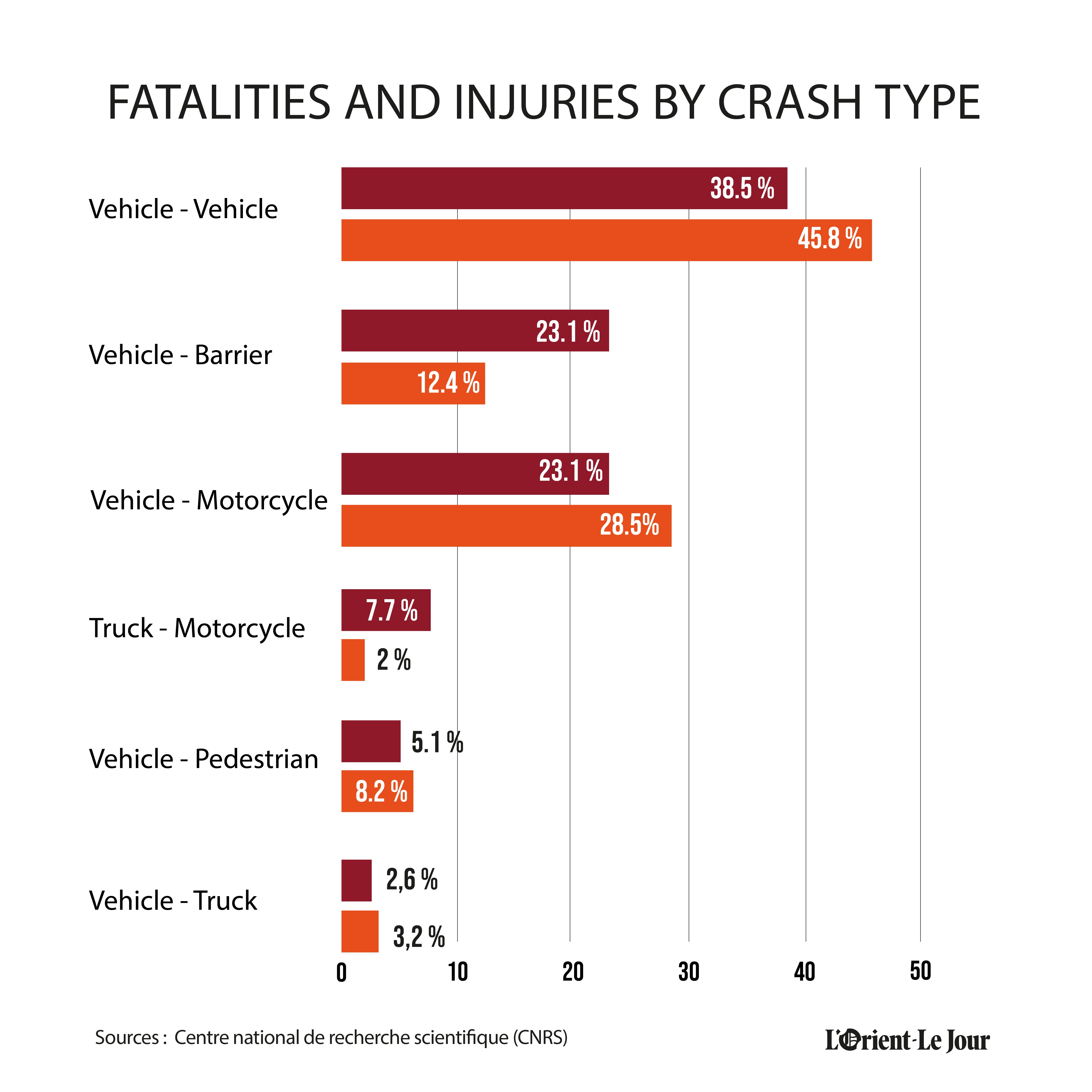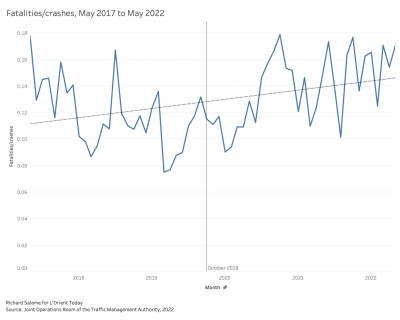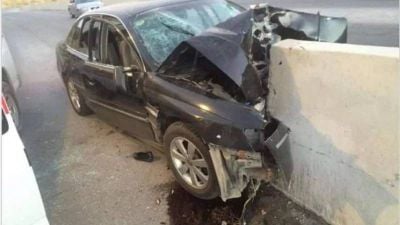A fatal accident that occurred in 2016 at the same spot where Lebanese singer George al-Rassi, along with his colleague Zeina Merhebi, died in August 2022. (Courtesy of al-Marsad archives)
BEIRUT — Trend analysis of road crashes conducted by the National Council for Scientific Research in Lebanon (CNRS) revealed an exceptionally high risk in three regions of Lebanon, as well as the country’s coastline.
The three main regions with elevated chances of traffic accidents are the Greater Beirut Area, Nabatieh and Zahle districts, as well as the coastal cities of Jounieh, Batroun, Tripoli, Jbail and Sour.
High risk on Fridays, Sundays
Vehicle-vehicle collisions comprised the highest proportion of accidents — a national average of 36.2 percent — followed by vehicle-motorcycle and vehicle-pedestrian incidents, accounting for 34.9 percent and 10.7 percent respectively, according to the data presented in the study.

Meanwhile, vehicle-vehicle collisions claimed the highest proportion of fatalities and injuries, accounting for 38.5 percent and 45.8 percent, respectively.
The study also showed that vehicle-motorcycle collisions and vehicle-barrier collisions each claimed 23.1 percent of fatalities.
The study exhibited the highest crash concentration during winter, which the report said is not surprising.
CNRS Secretary-General Tamara al-Zein told L'Orient Today that the study suggested an elevated risk of road crashes on Fridays — namely in the afternoon when many citizens make the journey to the mountains and villages for the weekend — and Sundays, when citizens return to the city ahead of a work week.
'We hand over [this study] to the local authorities'
Zein said local authorities should refer to the data to determine the “exact factors” behind the elevated risk of road crashes in Greater Beirut, Nabatieh and Zahle.
“We put [this study] at the disposal of local authorities, namely the municipalities, the Interior Ministry, the traffic department,” she told L'Orient Today. “Without our assessment, the authorities cannot determine 100 percent what factors are behind this big number of crashes in these regions.”

While the factors explaining a high or low risk of road crashes by region are not totally clear, Zein listed some possible causes such as insufficient road maintenance, power-starved roads, citizens’ road behavior and high traffic volume.
“We suspect that Beirut exhibits a high risk of car accidents because it encompasses a dense population — as human activity increases, the probability of road crashes increases,” she explained.
“An opposite example is the remote areas in the Bekaa were not a hotspot [for road crashes] because vehicles and humans are lower in numbers there.”
The coastal cities exhibit a high risk of car accidents because they are “connected to the major roads in Lebanon, and are seen as the main arteries where most urban activities take place and thus witness high traffic volume,” the study stated.
Zein said she was surprised that Nabatieh is a hotspot for road crashes, and could not immediately explain why.
How was the study conducted?
The trend is based on data collected over the last eight years by the Lebanese Observatory for Crashes on Road (LOCR), a research group at the CNRS’s National Center for Remote Sensing.
Zein told L’Orient Today that researchers used artificial intelligence to mine data from social media to monitor and assess road crashes in Lebanon.
Researchers created an algorithm in an “advanced method” that integrated accurate data, namely filtered keywords, from Facebook and Twitter, which indicated the regions where road crashes are most likely to occur.
Zein explained that citizens often snap pictures of road crashes as they pass by them, then post the photos on social media, a phenomenon that the CNRS took advantage of.
The LOCR platform then analyzes and categorizes the data.
However, Zein highlighted the need to expand on the social aspect of the study and investigate whether there is a higher activity on social media in the areas where a high number of road crashes was recorded.
An undercount
In August 2022, Lebanese singer George Al Rassi, along with his colleague Zeina Merhebi, died while returning from a performance in Syria when his car struck an apparently un-signposted concrete barrier placed in the median of the Beirut-Damascus highway.
His death refocused attention on the perennial problem of road safety is rarely prioritized in Lebanon.
From 2007 until the start of 2022, an average of 4,259 accidents were reported each year in Lebanon, killing an average of 519 people and injuring 5,760 annually.
These numbers are likely an undercount given that the World Health Organization found Lebanon's death registration data is not “at least 80 percent complete” and recently estimated a traffic death rate nearly double the rate reported by the state.
The World Bank has also called these figures “underreported.”

